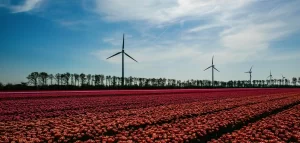On 21 March 2025, Heathrow Airport experienced a significant power outage due to a fire at the North Hyde transformer substation, leading to extensive disruptions.[1] The House of Commons’ Transport Select Committee held an oral evidence session on 2 April 2025 to investigate the incident, assess the response, and discuss future preventive measures, hearing from senior figures at Heathrow Airport, the National Grid, SSEN, and the Heathrow Airline Operators Committee.[2]
Heathrow Airport Incident: A Critical Infrastructure Failure
The power outage was traced to a fire that occurred at the North Hyde substation. This fire disabled three critical transformers and knocked out both independent power feeds to Heathrow. Although the airport’s power system was intended to be resilient, the simultaneous failure of both feeds led to a complete loss of supply to Terminals 2 and 3. In the early hours of the morning, all systems in the central terminal area lost power. Complicating the situation further was the lack of a clear timeline for restoration from the airport’s energy suppliers, which made it difficult for Heathrow to develop contingency plans or communicate clearly with airlines and passengers.[3]
Who were the witnesses at the Transport Select Committee evidence session?[4]
- Thomas Woldbye, Chief Executive of Heathrow Airport
- Alice Delahunty, President of National Grid Electricity Transmission
- Eliane Algaard, Operations Director at SSEN
- Nigel Wicking, Chief Executive of the Heathrow Airline Operators Committee
What evidence did the witnesses offer?
Thomas Woldbye, Chief Executive of Heathrow Airport, outlined the airport’s initial response to the crisis. The immediate priority, he explained, was to ensure the safety of passengers and staff. Airport teams focused on confirming that no one was trapped or harmed as a result of the power failure. Once safety was secured, attention turned to restoring operations. Heathrow set a target to resume flights by 4:30 AM on 22 March. Achieving this required the airport to reroute internal power supplies and manually bring systems back online – an intricate process due to the complexity of the site’s infrastructure.[5]
Woldbye noted that Heathrow activated its established crisis response protocol. However, the lack of information from external partners, including energy providers, significantly constrained decision-making. In the aftermath, Heathrow committed to a five-point resilience plan. This includes an internal review of current processes, commissioning an independent review led by Mary Kelly, closer engagement with airline executives to create shared emergency response protocols, enhanced cooperation with utility and operational partners, and stronger engagement with passenger groups to understand their needs during disruptions.[6]
Alice Delahunty, President of National Grid Electricity Transmission, clarified the National Grid’s role in the incident. She explained that while the National Grid delivers high-voltage electricity to the North Hyde substation, it is not responsible for managing the site itself. That responsibility lies with SSEN, the local distribution network operator. In response to the outage, National Grid worked closely with SSEN and Heathrow to assess the damage and identify potential routes to restore power. Delahunty stressed the importance of joint simulation exercises between National Grid and large end users like Heathrow to test scenarios and strengthen system resilience for the future.[7]
Eliane Algaard, Operations Director at SSEN, provided a detailed account of the fire and the subsequent response. She confirmed that the fire originated in one of the substation’s transformer units, which are key components of the airport’s power supply. Fire crews were deployed promptly, but difficulties accessing the site meant that the blaze took longer to bring under control than anticipated. Algaard acknowledged that the incident has raised serious questions about the resilience of critical infrastructure. She indicated that SSEN is reviewing the technical specifications of its assets and exploring design changes that could help prevent similar incidents in the future.[8]
Nigel Wicking, Chief Executive of the Heathrow Airline Operators Committee, represented the views of the airlines affected by the outage. He expressed deep frustration at what he described as poor communication from Heathrow Airport during the crisis. Airlines, he said, were effectively left in the dark, receiving little information about the status of the outage or what to expect in terms of restoration. As a result, around 120 flights were cancelled or diverted, impacting thousands of passengers and causing significant logistical and financial challenges for the airlines.[9]
Wicking called for more robust, transparent risk assessments to be developed and shared between the airport and its airline partners. He stressed that airlines need to be more closely integrated into Heathrow’s emergency planning processes, rather than being treated as secondary stakeholders. For the future, he advocated for a more collaborative model where airlines and airport authorities work together to manage risk and develop joint protocols for responding to high-impact events.[10]
What were the Transport Select Committee’s concerns and recommendations?
During the session, committee members raised several concerns. Chief among them was the fragility exposed by the outage – specifically, how a single point of failure could bring large parts of a national transport hub to a standstill. They also queried whether the design of Heathrow’s internal power routing made the recovery unnecessarily slow. Another point of concern was the lack of effective communication between infrastructure partners, the airport, and the airlines, which contributed to passenger confusion and dissatisfaction. Members of the committee signalled that they expect to return to these issues in future inquiries to ensure lessons are being implemented.[11]
What Happens Next?
In the wake of the outage, several investigations have been launched. Heathrow is undertaking an internal review and has also commissioned the independent Kelly Review to provide an external perspective. SSEN and the National Grid are separately reviewing the technical causes and examining what infrastructure improvements may be required. The Transport Committee has not ruled out a follow-up hearing and has made clear that accountability and progress on resilience measures will remain on its radar.[12]
This incident marks a turning point in how the UK’s critical transport infrastructure plans for and responds to low-probability, high-impact events. The work now being undertaken at Heathrow could have far-reaching implications for resilience standards across other major infrastructure operators. This event has become a pivotal moment in rethinking infrastructure resilience for the UK’s busiest airport, and potentially for other critical national assets.
BREVIA CONSULTING PROVIDES STRAIGHTFORWARD POLITICAL ADVICE AND SUPPORT TO BUSINESSES AND ORGANISATIONS
Discover how Brevia can help you and your organisation by contacting the Brevia Team on 020 7091 1650 or contact@brevia.co.uk
[1] BBC, Heathrow flights resume after fire forced shutdown, 21 March 2025, Link
[2] Transport Committee, Hansard, 2 April 2025, Col. 810, Link
[3] ibid
[4] ibid
[5] ibid
[6] ibid
[7] ibid
[8] ibid
[9] ibid
[10] ibid
[11] ibid
[12] ibid




